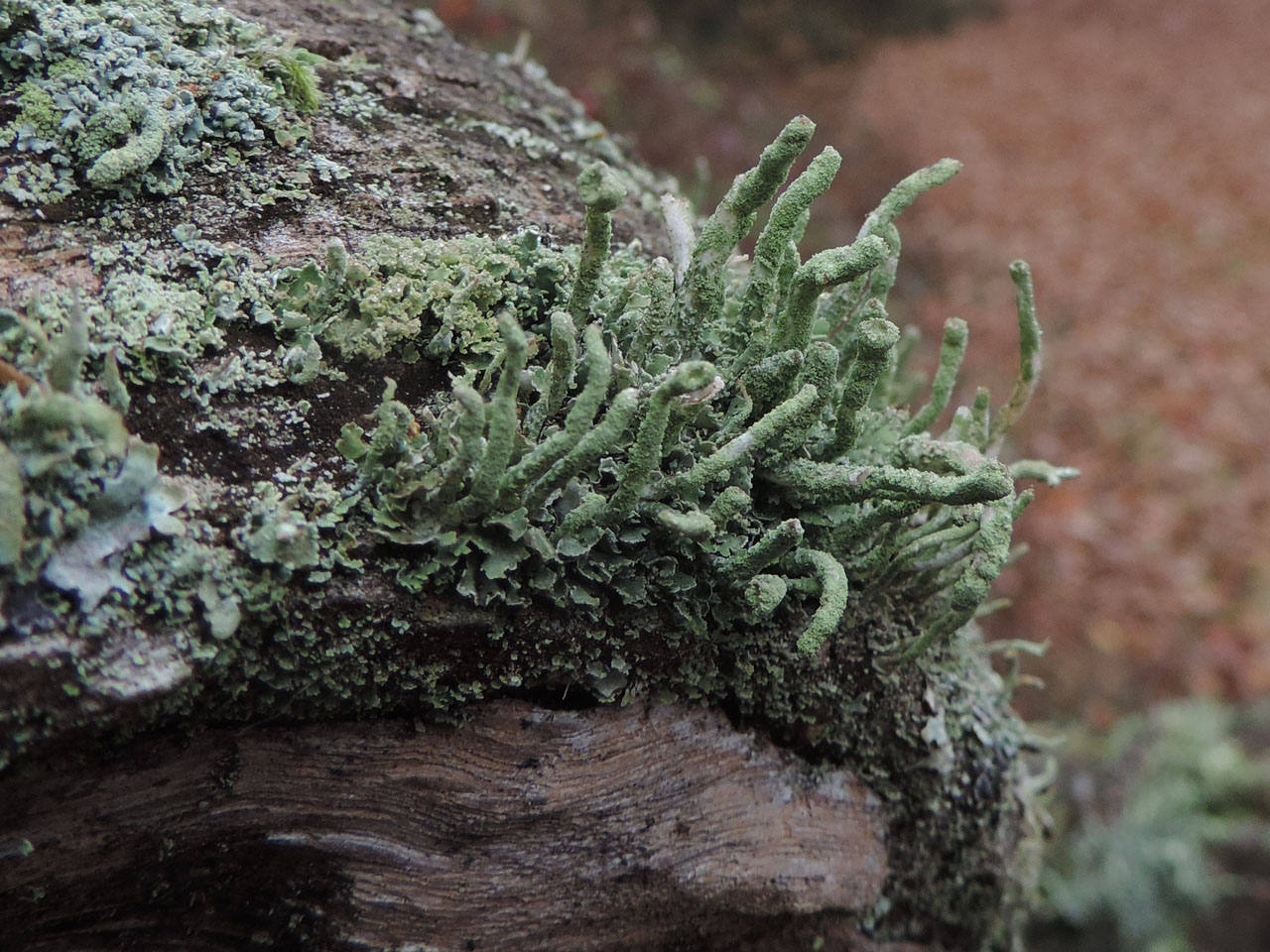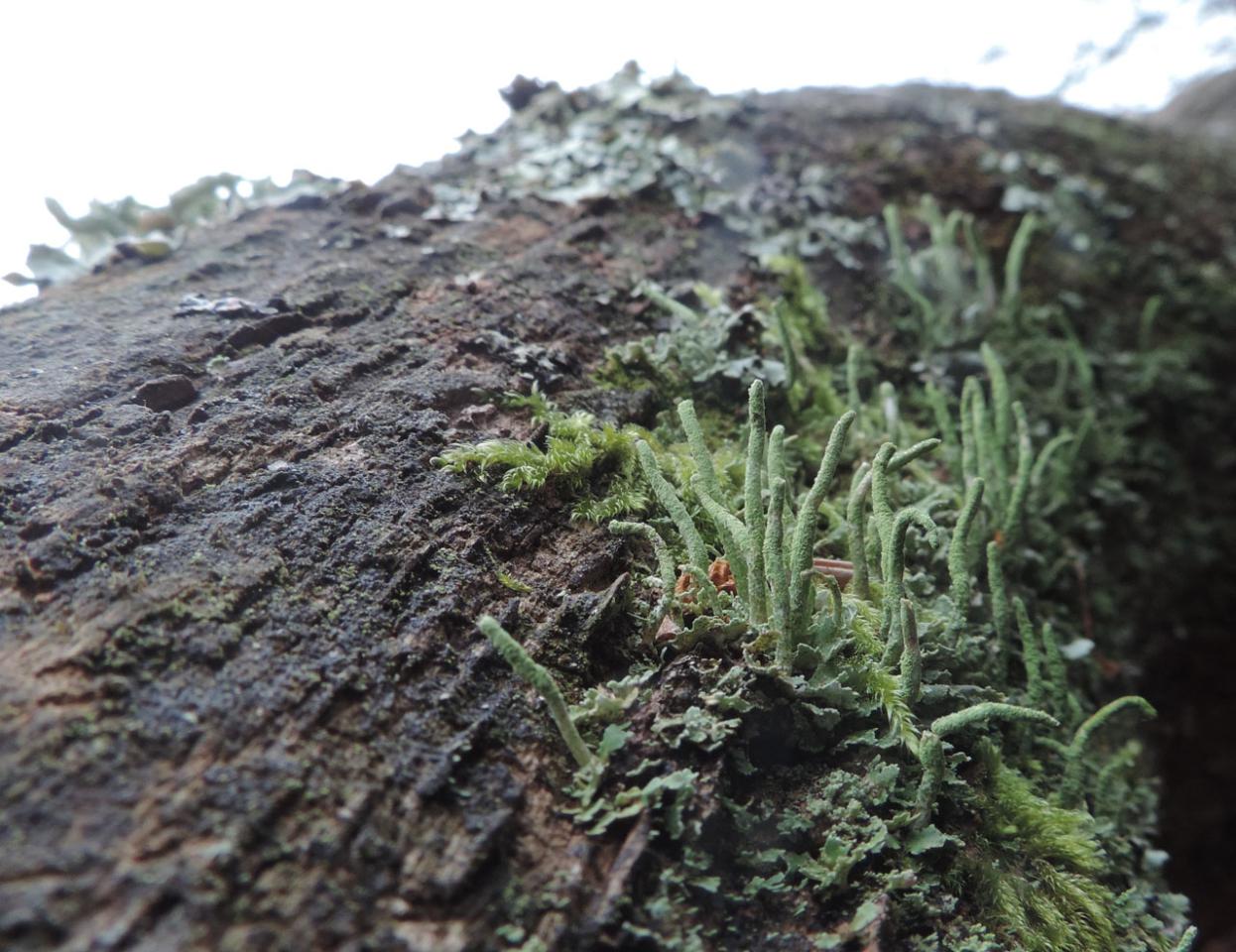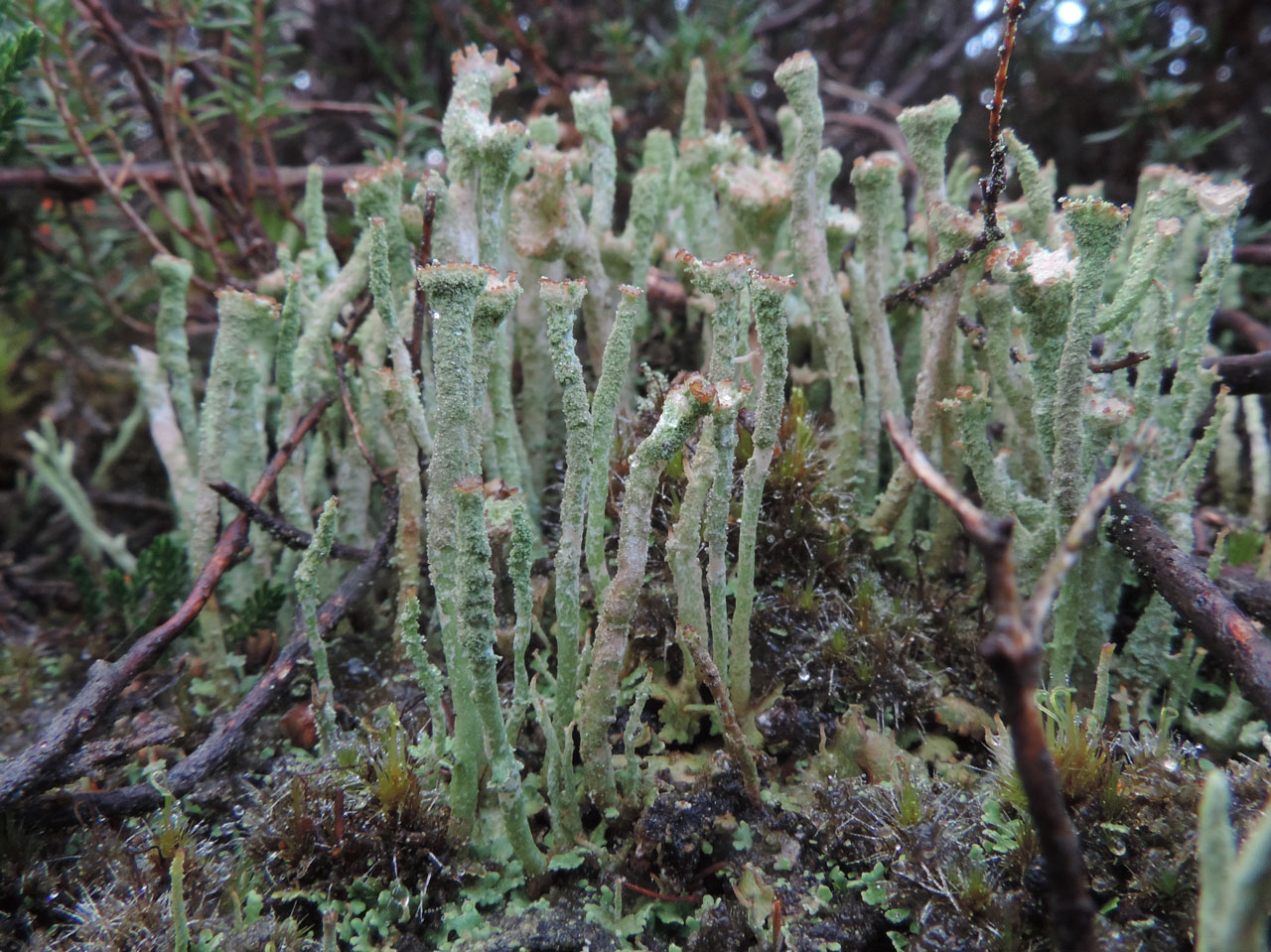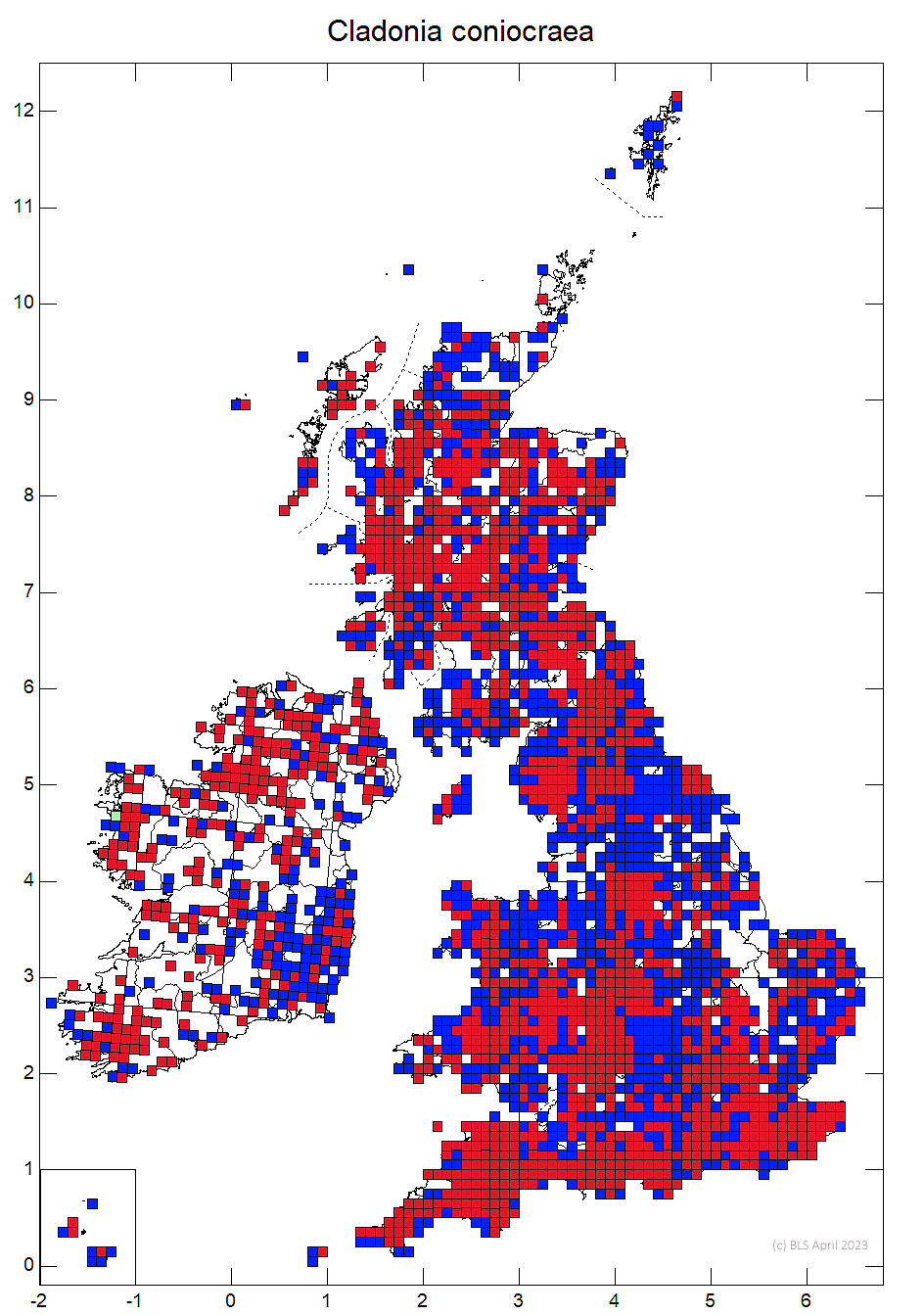Cladonia coniocraea
A ubiquitous Heathtail type Cladonia on acid bark, also found on lignum and less often acid soils. Characterised by fairly small grey-green, green when wet, podetia mostly pointed at the apices, which are predominantly farinose-sorediate but usually with a persistent corticate zone at least at the base. Robust podetia sometimes bear small, abruptly expanded terminal cups, that may hardly exceed the breadth of the podetium. Thallus C–, K–, KC–, Pd+ rust-red, UV–.
Podetia 1–3.5 (–5) cm tall, grey-green, green when wet, mostly pointed at the apices, unbranched, often ± curved, sometimes bearing small, abruptly expanded terminal cup (1–3 mm long) that may hardly exceed the breadth of the podetium, predominantly farinose-sorediate but usually with a persistent corticate zone at least at the base, which may extend upwards only for 1–2 mm but in other populations sheathe much of the lower surface and also extend into the cup. Basal squamules dull green above, brighter green when wet, pale below, very variable and often sorediate in the lower part. Apothecia brown, rare, on tips of podetia. Pycnidia brown to black, on tips of podetia or margin of scyphi, with colourless gel. Thallus C–, K–, KC–, Pd+ rust-red, UV– (fumarprotocetraric acid).
The most robust morphs with cups were assigned to Cladonia ochrochlora, but squencing data has failed sufficiently distinguish the taxa, and the taxa is not recognised in Pino-Bodas et al (2021).
Other sorediate Heathtails with brown apothecia/pycnidia are usually taller and more elegant in outline. Care is needed when testing with UV light, as the white medulla of C. coniocraea can reflect stray white light generated by the UV lamp, giving a false positive for UV; this can lead to confusion with C. rei.
Cladonia coniocraea often occurs with morphs of C. polydactyla lacking scyphi, which may be recognized by its overall blue-grey tinge (± unchanged when wet) and K+ yellow & Pd+ orange (thamnolic acid) spot test.
Chiefly on acid bark and wood, also lignum and less often on heathland peaty soils; common and very widespread. Cladonia coniocraea is tolerant of SO2 pollution, but less so of eutrophication

Throughout Britain and Ireland.
Pino-Bodas, R., Sanderson, N., Cannon, P., Aptroot, A., Coppins, B., Orange, A. & Simkin, J. (2021). Lecanorales: Cladoniaceae, including the genera Cladonia, Pilophorus and Pycnothelia. Revisions of British and Irish Lichens 19: 1-45. Link
Text by Neil A Sanderson, based on Pino-Bodas et al (2021)



